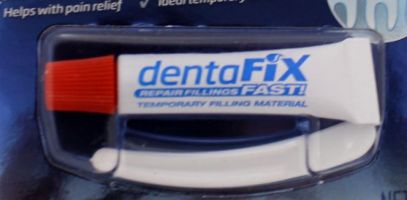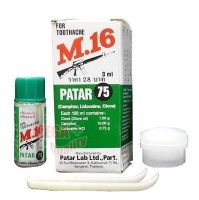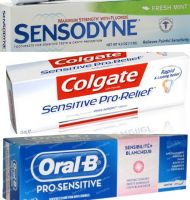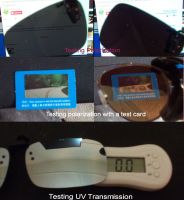Main > Health > Diseases > Cancer
Increase intake of anti-oxidative foods, to assist with cell repair. Good sources of specific antioxidants include:
- allium sulphur compounds – leeks, onions and garlic
- anthocyanins – eggplant, grapes and berries
- beta-carotene – pumpkin, mangoes, apricots, carrots, spinach and parsley
- catechins – red wine and tea
- copper – seafood, lean meat, milk and nuts
- cryptoxanthins – red capsicum, pumpkin and mangoes
- flavonoids – tea, green tea, citrus fruits, red wine, onion and apples
- indoles – cruciferous vegetables such as broccoli, cabbage and cauliflower
- isoflavonoids – soybeans, tofu, lentils, peas and milk
- lignans – sesame seeds, bran, whole grains and vegetables
- lutein – green, leafy vegetables like spinach, and corn
- lycopene – tomatoes, pink grapefruit and watermelon
- manganese – seafood, lean meat, milk and nuts
- polyphenols – thyme and oregano
- selenium – seafood, offal, lean meat and whole grains
- vitamin A – liver, sweet potatoes, carrots, milk, and egg yolks
- vitamin C – oranges, blackcurrants, kiwifruit, mangoes, broccoli, spinach, capsicum and strawberries
- vitamin E – vegetable oils (such as wheatgerm oil), avocados, nuts, seeds and whole grains
- zinc – seafood, lean meat, milk and nuts
- zoochemicals – red meat, offal and fish. Also derived from the plants that animals eat.
kellyjones00 (593)
|
|
|
Main > Health > Medicine > Surgery
Operations affecting muscle use: Prepare for your recovery in advance by improving fitness, strength, flexibility, and stamina, focussing especially on the specific muscle area.
kellyjones00 (593)
|
|
|
Main > Health > Medicine > Surgery
General tips for recovery:
- Plan ahead by visualising the effects of surgery on one's body and lifestyle, and practise coping methods.
- If unable to drive, familiarise yourself with public transport use.
- If unable to sleep as usual, obtain the sleeping aids and/or accustom yourself to the positions.
- If unable to lift items over a particular weight, have a couple of days' advance practice of not lifting to see what lifestyle changes will be needed during recovery.
- Stick some adhesive tape over the affected body parts, to see how restricted body movements will be from pain or wound healing.
- If specific senses will be impaired, e.g. unable to see, hear, etc., try getting about without relying on those senses.
kellyjones00 (593)
|
|
|
Main > Health > Dental
Toothache can be deceptive. Firstly, a problem tooth in the top can cause a painful tooth in the bottom. And secondly, a painful tooth might be caused by damage to a nerve, such as the trigeminal nerve, and may not be a problem with a tooth at all.
thesource (378)

Click to enlarge
|
|
|
Main > Health > Dental
thesource (378)
|
|
|
Main > Health > Dental
If a tooth breaks or a filling falls out you can temporarily patch it up with either sugar-free chewing gum, or with a temporary filling kit which may be available at your chemist. This may reduce pain till you see your dentist.
thesource (378)

Click to enlarge
|
|
|
Main > Health > Dental
The best pain relief is with paracetamol and ibuprofen ( link ), but clove oil can also be dripped onto the tooth, or held in place with a ball of cotton wool soaked in clove oil.
thesource (378)

Click to enlarge
|
|
|
Main > Health > Dental
In the case of a large swelling, especially if it is spreading, you should see a dentist immediately, or attend a local hospital. Such swellings can be dangerous if not treated immediately.
thesource (378)

Click to enlarge
|
|
|
Main > Health > Dental
If toothache is preventing you from sleeping, try propping your head up with pillows. Raising your head will help reduce the pressure inside the tooth, which may provide some quick relief.
thesource (378)
|
|
|
Main > Health > Dental
Sensitive teeth around the gumline can cause a lot of pain. Try applying some specially formulated "sensitive toothpaste" to the area with your finger, to help numb the pain.
thesource (378)

Click to enlarge
|
|
|
Main > Health > Mental health > Psychotherapy
Psychotherapy technique for highly capable miserly philosophers:
Psychotherapy involves telling an expert anent being, to some degree, mentally unable to deal with one's problems, and getting their advice on how to become able; so, for those who know theoretically that they are already mentally capable, but are having difficulty making it real, it is possible to play both roles and at the same time avoid hefty psychotherapist's fees, travel time, and the considerable inconvenience of explaining one's history and/or providing ongoing philosophic-psychological training to a psychotherapist over a few months.
An useful technique is to speak into a recorder, then play it back to yourself. It activates different parts of the brain to speak and listen. Articulating it in speech also clarifies the problem. Best of all, there is no interruption to one's thoughts, as an unfamiliarised listening expert would create. The aim is to understand oneself better. To use this technique, I suggest:
- Start the recording with the date, time and theme
- Explain the general problem
- Explain how it plays out in one's everyday life
- Focus on recurrent problematic thoughts / beliefs, and nail down a few choice ones to challenge
- Create one or two thoughts / beliefs that will put one on the path to recovery
- Visualise using the improved thoughts in specific scenarios
- Apply daily until it becomes a new habit
kellyjones00 (593)
|
|
|
Main > Health > Emergencies
VOIP: Avoid using VOIP to call an ambulance. It takes too long for a computer to boot, start an internet connection, and execute the VOIP program. You may be unconscious, or unable to see, hear, or to speak by the time the phone call can be made.
kellyjones00 (593)
|
|
|
Main > Health > Emergencies
Calling for help: Don't be embarrassed to call an ambulance for yourself in an emergency. What is an emergency? It is usually a combination of severe pain, dizziness, fainting, nausea, vomiting, fever, and/or unconsciousness.
kellyjones00 (593)
|
|
|
Main > Health > Emergencies
Information on calling an ambulance: Emergency services will first want a clear street address in relation to the rest of the country. Then to know what is wrong (signs and symptoms), name of the caller and ill person, and a phone number. And then, the location of the ill person, in relation to the street address (e.g. which room? Is it locked?)
kellyjones00 (593)
|
|
|
Main > Health > Emergencies
Going to hospital as an inpatient: Take your wallet with various ID cards and some money, mobile phone, spare clothes, and diary (including details of your medical history and contacts like doctor, next of kin, and so on). A bottle of water and a book are handy, because you may need to drink a lot of water for tests, and will often be waiting. Button-front loose shirts and trousers are ideal, allowing staff easy access to test your blood pressure, take blood samples, apply sensors, and scan parts of your body.
kellyjones00 (593)
|
|
|
Main > Health > Weight management > Food swaps
Instead of lollies and chips, some healthy snack options include:
- fresh fruit
- plain low-fat yoghurt with fresh fruit and seeds
- low-salt crackers and a bean dip
- baked beans or sardines on toast
- vegetable soup with beans
- lean meat, e.g. turkey, tuna, chicken without skin
- low-fat milk-shake with a teaspoon of honey and cinnamon
Instead of salty, oily takeaways, some healthy takeaway options include:
- multigrain sandwich with lean meat and salad
- toastie with tomato, cheese and lean meat
- low-fat milk-shake with berries
- sushi
- flat bread wraps with salad and lean meat or cheese
- garden salad with cheese
- fruit salad and yoghurt
- baked stuffed potato with low-fat filling
- steamed rice and vegetables with tofu
kellyjones00 (593)
|
|
|
Main > Health > Weight management > Food aids
Apple cider vinegar: A couple of teaspoons in a cup of hot water before a meal can block the digestion of carbohydrates in the stomach, levelling out blood sugar.
kellyjones00 (593)
|
|
|
Main > Health > Lifestyle
Handy Emergency / Travel Box: A survival kit stored in the car, for bushfire, flood, or other emergencies, can double as a travel box.
Recommended contents:
- First aid kit, spare medications (kept cool)
- Water purifying tablets, eye drops
- Toiletry bag (toothpaste, toothbrush, floss, soap, shaver)
- Liquid soap, laundry liquid, sanitary handwash, toilet paper, handwipes
- Candles, matches, lighter, torch, spare batteries
- Spirit-burner and lighter, small metal cooking bowl and cup, pocket knife, spoon and a couple of scourers for cleaning
- Travel towel
- Needles, thread, pins, safety pins, buttons
- Spray gun
- Sun hat, sunglasses, spare shoes
- A 15 - 20L water container stored in the car separately
- A metal trowel may come in handy for putting out small fires and disposing of faeces.
This box makes it much easier to pack for travelling or having to leave home in an emergency. Just throw in spare clothes, a blanket, tent, sleeping bag, mat, food and water.
kellyjones00 (593)
|
|
|
Main > Health > Weight management > Food aids
If you don't like ice-cream, steak and chips, then switch to a gluten-free diet, because:
1. Foods labelled "gluten-free" are 2-3 times more expensive.
2. Legumes and beans, rice, quinoa, vegetables, and meat require cooking (avoids impulsive snacking).
3. Most cafes, restaurants and cafes will only have a couple of gluten-free choices.
kellyjones00 (593)
|
|
|
Main > Health > Diet & Nutrition > Herbs and spices
Reduce inflammation: Turmeric, cinnamon, ginger.
kellyjones00 (593)
|
|
|
Main > Health > Diet & Nutrition > Fats
- Nuts and seeds have minerals and fibre as well as healthy fats.
- Fish like mackerel, herring, salmon and sardines have long-chain omega 3 oils (better than omega 6).
- Coconut oil is a healthy form of saturated fat, recommended for cooking.
- Extra virgin olive oil is recommended for salad dressings.
kellyjones00 (593)
|
|
|
Main > Health > Diet & Nutrition > Fasting
General tips:
- Fasting aims to use stored energy to repair cells instead of creating cells.
- Intermittent fasting alternates days with normal and low calorie intake. 5:2 means five normal days followed by two fasting days; 1:1 means every second day fasting.
- Protein (amino acids) are key molecules in cellular activity, so fasting from protein slows down metabolism.
- Obesity causes many health problems, which fasting aims to prevent.
- Do not fast from fluids, but drink up to 2 litres of water, tea or vegetable juice each day.
- Instead of fasting, reduce calories to 90% and improve nutrition with high amounts of fresh fruit and vegetables, whole grains, nuts and seeds.
kellyjones00 (593)
|
|
|
Main > Health > Mental health > Anger > Chronic anger
Dealing with chronic anger:
Chronic, violent anger is often more commonly associated with men than women, but this may be because men are typically physically more powerful than women, and therefore a man's chronic anger can have more disastrous consequences.
Anger is an emotional reaction to a perception of threat and danger to oneself or others, so the underlying stronger emotion is fear.
Chronic, violent anger develops into a habit, when a person has experienced fear intensely and repeatedly, and cannot overcome the fear rationally. This may begin as a child, especially when the child's ability to deal with fear is diminished, e.g. by parent failure to assist, or mockery, and so forth.
Overcoming chronic anger and fear takes repeated patient thought-overhauling, with lots of honesty with one's self, as it is hard to relinquish the feeling of personal security that an attacking personality provides to a chronically timid being.
kellyjones00 (593)
|
|
|
Main > Health > Exercise & fitness > Running > Hills
1. "The key to running a hill is leg turnover – your stride should be slightly shorter and faster than if you were running on the flats," Damon Bray of RunLab advises. "We have a natural tendency to want to run with longer slower stride but this is inefficient and is actually putting more stress through the legs. Think about riding a bike up a hill – a slow, hard gear is harder to maintain than spinning the pedals with an easier gear – the same goes for your legs up the hill."
2. "A few metres before you get to the bottom of the hill start your faster leg turnover – the momentum will help you take a little bit of speed into the hill to propel you toward the top."
3. "Arm drive will help with that forward momentum – if you drive and pump the arms a little higher than normal your legs will follow."
4. "Stand tall! You're out hitting the hills so stand tall and be proud! Look toward the top of the hill and not down at your feet, it'll open you up and allow you to breathe easier."
5. "Count your steps. start at one and count your steps to 10 then start at one again. This will keep your mind thinking about your faster leg turnover and form rather than the pain you 'may' be going through."
- Damon Bray of link
kellyjones00 (593)
|
|
|
Main > Health > Optics/glasses/spectacles
Don't buy your glasses at a "boutique" store, or you will pay many times more than what you need to. Get your prescription only, and make sure the optometrist records your "pupillary distance" (PD) on your prescription. Then you can find a cheap place online, and order your glasses online. Make sure that the frames you buy are the correct width for your face, and that the lens height is high enough for the kind of lenses that you need. Progressive lenses require more lens height. If ordering reading, or computer glasses online then you will need to provide the "Add" number on your prescription (or add the "Add" number to the "sphere" number, for each eye, if there is no provision to provide it).
thesource (378)
|
|
|
Main > Health > Optics/glasses/spectacles
Polycarbonate lenses can produce slightly less sharp images than plastic or glass lenses, but are thinner, lighter, stronger, and more scratch resistant. They are also UV resistant. Glass is the best optical material, but is significantly heavier, and shatters more easily. Plastic (CR-39) is the most popular material for glasses lenses, and is a compromise between the two.
thesource (378)
|
|
|
Main > Health > Optics/glasses/spectacles > Sunglasses
Sunglasses should be 100% UV resistant, as well as polarized (unless you are flying aircraft), and should wrap around your face so that light cannot get around the side of the frame. Test if they are polarized by looking at a computer screen with them on. If the light intensity from the screen changes as you tilt your head at various angles, then the lenses are polarized. Polarization test cards are also available which reveal hidden objects if viewed through a polarized lens. It's not so easy to test whether the lenses block UV light. Cheap UV meters are available (less than $10) on places such as Aliexpress. Even better is to have the lenses tested at your local optometrist.
thesource (378)

Click to enlarge
|
|
|
Main > Health > Optics/glasses/spectacles
If you don't have your glasses and you are near-sighted (can't focus on the distance) then you can use the camera on your phone to focus on what is distant, and view the image on your phone.
thesource (378)
|
|
|
Main > Health > Optics/glasses/spectacles > Sunglasses
Different color lenses are for different purposes:
- Black, gray, smoke, or mirror lenses are best for bright conditions. The color that you see through the lens remain similar to what you normally see, though will be darkened.
- Brown is a good all-round lens, which is okay for bright light, but will also improve contrast, clarity, and depth perception.
- Amber or orange lenses are not the best for bright days, but can help increase contrast on cloudy or overcast days, as they filter out blue light. Blue light diffuses easily, decreasing the contrast of what one sees.
- Yellow lenses can increase clarity in foggy and hazy conditions. These also work by blocking blue light. These are not designed for bright days.
thesource (378)
|
|
|
Main > Health > Environment > Dire situations > Extreme weather > Bushfires
Bushfire readiness:
- Prepare a written plan well in advance, based on defending your shelter or evacuating to a safer place.
- Written plan includes:
1. Mitigation (3-4 months before fire season): tasks for reducing overall hazards, e.g. create fire management zone around buildings, reduce flammable vegetation, ensure buildings are ember proof, create emergency kit and fire-fighting equipment, and write a bushfire emergency plan.
2. Preparation (1-2 months before): Test fire-fighting equipment, replenish water stores, check emergency kit is ready, ensure neighbours and animals are considered in plans.
3. Response / Recovery (in bushfires): Check weather forecasts and emergency services updates. If evacuating, do so before the fire arrives and do not escape through fire.
kellyjones00 (593)
|
|
|
Main > Health > Environment > Dire situations > Extreme weather > Bushfires
Emergency kit: For surviving the day/s of fire, and up to four days afterwards.
- AM/FM radio with spare batteries.
- Waterproof torch and spare batteries.
- Phone and recharger and/or portable charger.
- Woollen blankets
- Protective clothing (long-sleeved shirt with collar and long pants, both of cotton drill or wool, minus hems. Wool socks. Closed shoes with rubber soles (no nails or studs). Broad-brimmed hat. Goggles. Strong gloves. Face mask. Do not wet clothing.)
- First aid kit and manual
- Emergency contact list (included with written bushfire plan)
Add before leaving:
- Money, EFTPOS cards
- Copies of important documents, e.g. title, birth certificate, passport, insurance policies
- Medications, sanitary supplies, toiletries
- Drinking water (3L / day / person)
- Non-perishable food
- Change of clothes
- Pet food, drinking water and bowls, leash
Suggestions for food stores:
- Powdered or UHT milk, tea, coffee
- Tins of baked beans, tuna, spaghetti, creamed rice, preserved fruit
- Precooked meal sachets
- Cereal
- Dried fruit and nut mixes
- Spoons, knives, forks, cups
kellyjones00 (593)
|
|
|
Main > Health > Environment > Dire situations > Extreme weather > Bushfires
Fire fighting equipment list:— A minimum of 10,000L water (e.g. rain tanks, dams).
— Do not rely on mains water, because town pressure can drop in emergencies
— Drinking water (3L / day / person)
— Mobile phone and charger / portable power supply
— Woollen blanket for each person
— Fire extinguishers
— First aid kit, including artificial tears
— AM/FM Radio with plenty of spare batteries
— Metal buckets
— Old-style cotton mops (very water absorbant)
— Protective clothing
— Torches and spare batteries
— Hoses at least 18mm diameter, at least 20 metres long, with metal fittings
— Knapsack sprayer, and other spray bottles
— Shovel
— Ladder
— Towels
— Face mask
— Medication, including water purifying tablets
— Gutter bungs
— Sunscreen
Tips for fighting a bushfire around a house:
— Leave a ladder inside with a torch in the ceiling to check for embers
— Leave a torch inside the house in case of power outages. Check batteries.
— Leave a ladder outside to check gutters are full of water and to extinguish roof fires.
— Ensure hoses reach all parts of the house.
— Fill the bathtub with water.
— Use metal buckets and mops to extinguish embers around the house.
— Use woollen blankets as a shield from radiant heat.
— Place wet towels along door gaps to prevent entrance of embers and smoke into house.
— Use shovels and rakes for breaking up piles of burning material and to extinguish it by covering with dirt.
kellyjones00 (593)
|
|
|
Main > Health > Health care
Blood sample extraction tip: To find veins more easily, especially for a fasting blood test, have a couple of hot cups of herbal tea half an hour beforehand.
kellyjones00 (593)
|
|
|
Main > Health > Sleep
Blue light interferes with melatonin production. This affects sleepiness.
See: link
Some electronic devices have blue light filters, while others need them installed. For instance, the Android app, Twilight, increases filtration according to what your time zone says is night-time.
kellyjones00 (593)
|
|
|
Main > Health > Diet & Nutrition > Allergies
East asians and lactose intolerance: If you have asian ancestry and have stomach pains with milk, then you may have insufficient lactase, the enzyme that breaks down lactose. This is very likely if most of your near relatives are also lactose-intolerant. See link Opt for alternatives like lactose-free milk, soy milk, almond milk, or coconut milk.
kellyjones00 (593)
|
|
|
Main > Health > Exercise & fitness
Crunch in Bed: Before you even get out of bed in the morning, do 10 stomach crunches while lying flat on your mattress. Increase daily by one until you get up to 100.
[guest]
|
|
|
